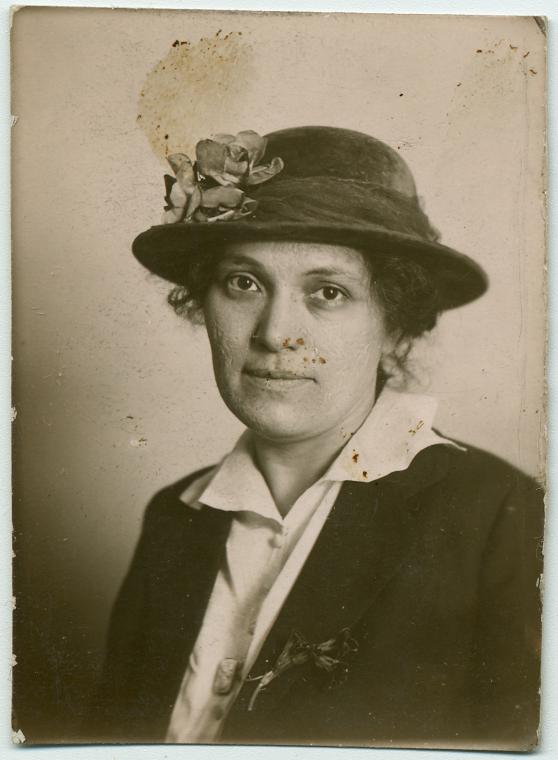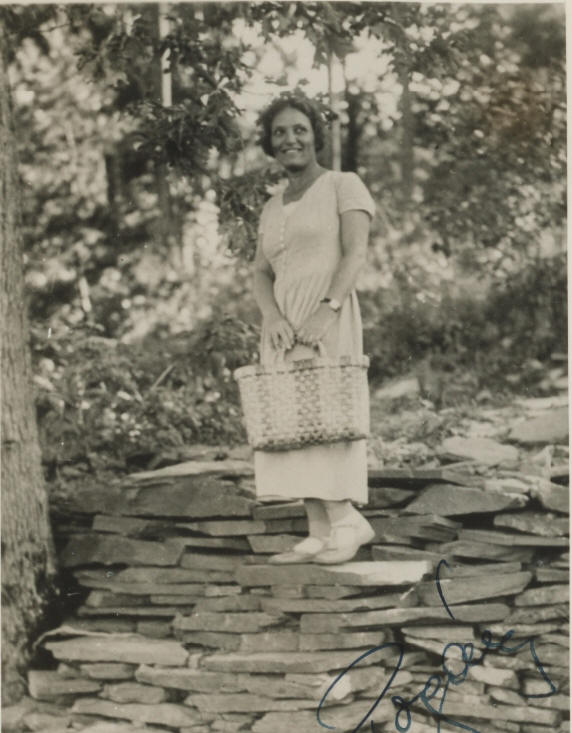

Queer Places:
65 Central Park West, New York, NY 10023


Paula was born in Szeged, on the river Tisza. This town, the second largest in Hungary, was a peasant town famous for its paprika, famous also for having once been the home of vampires and witches. A nearby island in the river was called the Witch's Island. The family moved to Budapest when Paula was three. They lived on the hilly side of the city, the Buda side, in the rather isolated Schwabian district. For a while they lived in what had formerly been a convent. It possessed a labyrinth of courtyards wonderful hide-and-seek places for children. Paula Pogany was the youngest of four children. One of them was the American artist Wiily Pogany. (The correct pronunciation, by the way, is with the accent on the a and with the a long.) Another brother, Nandor, lived in Budapest with his mother and his half-sister Ilka. Nandor was a remarkable person, who, if he had not been seriously handicapped by an accident in childhood, would have been one of the great artists of the world. As it was, he died exquisite tooled leather work, hook binding and photography, also wrote articles on musical subject and books of fairy tales. One of his books of fairy tales was illustrated by Willy Pogany and published in English by Dutton in 1930.
The father of the Poganys was an intellectual dreamer who fell in love at seventeen and left school at once to marry and go into business. He became a succeful and much respected merchant. But unfortunately he did not insure his merchandise. His ex-convent house and warehouse stood on the shore of the Danube, and the present mason work embankment had not yet been built. The Danube one night indulged in what had ever since been called the "Great Flood" and tossed up a fifteen-foot wave with ruthlessly and quite literally washed away the Pogany family's fortune.
The children had a wonderfully happy childhood, with an absolute lack of "don'ts" and a continual shortage of food and clothing. At the same time they lived in a world of culture, surrounded by books, art and music. The Pogany home was a haunt or Mecca for all sorts and conditions of people. This was partly because of its air of freedom and hospitality - every artist looking for a place to sleep just naturally gravitated to the Poganys - but largely because of the amazing personality of the Pogany mother. The lady was a vibrant, warm, powerful personality, and was invariably the focus of attention. She was also the chief Bohemian of the family. She held open house daily. Musicians, artists, poets, manufacturers, house painters, peasant women, gathered together there, sit and talked, drank the afternoon coffee with solid whipped cream served by Ilka from a fifteen-inch bowl and took council and inspiration from mother Pogany.
In her native Hungary Pogany was renowned as a pacifist, a suffrage leader and an editor of a feminist magazine. In the United States her profession was the teaching of the Mensendieck system of body culture - a system of functional exercises which she believed would, if permitted, improve to an enormous extent the health, strength and beauty of women. Paula left school when she was sixteen. She worked in an oil company for a few months, then became secretary of the Hungarian Feminist Society. The Hungarian feminist movement had always been unique in that it included a large number of men, and the majority of its women were married women; the movement professed no iota of hatred or hostility toward men, and lauded the characteristically feminine traits. The program covered such matters as suffrage, birth control, peace propaganda, social hygiene, equality of wages for equality of work, child and mother-welfare. It aimed, too, at the opening of all schools and professions to women.
Paula Pogany became a member of the editorial staff of the feminist magazine "A No-es a tarsadalon" - the Woman an and Society - and later on its editor. During the World War I, this paper was decidedly a magazine of the people and devoted unreservedly to the cause of peace. Consequently, the censors devoted their scissors wholeheartedly to it. Not a single war-time issue but had huge gashes cut out from its pages; frequently three-quarters of the reading matter was cut out. The Hungarian suffrage movement was unique in that equal suffrage was granted, not like that of other nations, on a basis of appreciation of women's war services, but instead of the basis of women's peace propaganda. During the war the suffrage movement, on a peace propaganda, secured 100.000 members. Hungarian equal suffrage, obtained at the close of the war, has been held to throughout all the post-war government upheavals. Pogany first contribution to the feminist magazine was an article on the Mensendieck system, with which she had just become acquainted. Later, she took a course under a pupil of Dr. Mensendieck. After that she went to Hamburg, Germany, and studied the Mensendieck system for two years under the best Mensendieck teachers and received a diploma. Her studies Included not only the Mensendieck principles and exercises but also anatomy, physiology, psychology and principles of teaching. After that she taught the system in Germany until she could obtain an American visa, and then moved to the United States. The Mensendieck system had been known throughout Europe since the beginning of the XX century. It was created by an American woman. Dr. Bess M. Mensendieck. She brought to it a fourfold approach. She was a sculptor, sensitively aware of the architecture of the human body; a scientific student, versed in physics and mechanics; a doctor of medicine, familiar with human anatomy and physiology, and a breathing expert, skilled in the technique of developing the lungs and through them the whole human organism.
Pogany quickly became established in New York, partly through the assistance of her brother, Willy, partly through her previous acquaintance with American women leaders. She had a variety of people among her pupils women teachers, theatrical women, opera singers, dancers, children and some men. Besides teaching, she worked for three years with Dr. Mensendieck herself, in America. Theatrical people sought the course particularly for the facility they thought it gave them in moving easily and gracefully across a stage. Pogany explained this result by saying that when the body functions harmoniously one ceases to think about one's motions; the body is functioning properly according to the motive of the part the person is playing, and the avenues of expression are free. Women had come to Pogany for reducing weight. She had no prescription for reducing, beyond temperance in eating and the practicing of the Mensendieck exercises. If one's body was made to function naturally, there was no need of reducing.
Paula Pogany married an American man, Toscan Bennett. He was for a long time a corporation lawyer. He was known as one of the founders of the Brookwood Labor College and also as one of the founders of the Farmer Labor party. He was a writer on psychological subjects. Her husband possessed a large library, but she was little acquainted with it. Her greatest reading interest, really a passion, was in biography. She enjoyed the biographies of Goethe and of Napoleon, but more particularly the stories of great women like Queen Elizabeth, George Sand and Isadora Duncan. She was personal in her liking for special books, at the same time discerning in her choice. She had pronounced likes and dislikes in art; she was herself creatively artistic in her teaching. She had an absolute independence of thought and an amazing intuitive power, which was incomprehensible to her. She continually made impulsive statements which she was unable to explain but eventually found to be correct. She had a love of music but no musical ability. She was acquainted with hundreds of Hungarian songs and could give the exact words of every piece of Hungarian music she heared.
My published books: